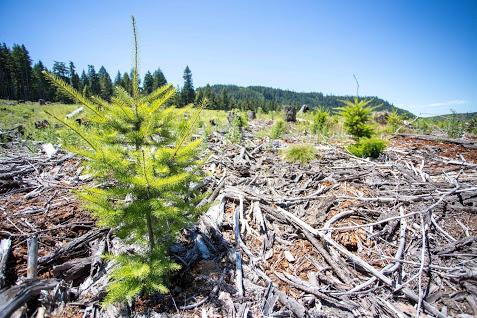By Governor Kate Brow’s Office | Feb 10, 2020
**This press release originally appeared on the Governor’s website. See that release here.
The memorandum of understanding will chart a new path for science-based forest management in Oregon
Salem, OR—Governor Kate Brown today announced a historic agreement between representatives from the state’s forest industry and major environmental groups to chart a collaborative course toward meaningful, science-based forest management in Oregon. The agreement takes a significant step toward a new era of cooperation, leaving behind the conflicts of the past.
“This pact proves that when we work together with a willingness to compromise, we can create a better future in Oregon,” said Governor Brown. “Oregonians want healthy forests and fish, a vibrant forest sector, and prosperous rural communities. These are not mutually exclusive goals. The conversations that brought forth this agreement, coupled with sound science, will bring certainty for everyone involved while protecting Oregon’s environment and endangered species.”
The signed memorandum of understanding (MOU) addresses three key issues. It will:
• Drive a process for Oregon to update its timber practices: For the first time, Oregon will strive for the endorsement of federal wildlife agencies, signifying that the state’s forest practices are protective of threatened and endangered species, including Oregon’s iconic salmon. Through this process, the state will seek a Habitat Conservation Plan, allowing Oregonians to continue their long tradition of working in the woods while honoring natural habitats.
• Support passage of new legislation for the 2020 session on aerial spraying of pesticides: A state-of-the-art system will build confidence with forest neighbors, who will be eligible to receive real-time notification that aerial spraying will occur. This first of its kind system will expand protected spray buffers around drinking water, homes, and schools.
• Expand forest stream buffers in the Rogue-Siskiyou region: New legislation will also expand forest stream buffers along salmon, steelhead, and bull trout streams, aligning forest practices in the area with those of the rest of western Oregon.
With this MOU, both sides have agreed that all forestry-related initiative petitions and related litigation will be dropped after the passage of the legislation this session.
“This MOU is shared recognition of the diverse benefits Oregon’s forests provide, and the need for more meaningful dialogue around forest issues across the state,” said Greg Miller, long-time timber industry executive and representative of the coalition of forest companies. “Oregon is one of the best places in the world to grow and harvest trees sustainably; we lead the nation in wood products manufacturing, and we are proud of our record of environmental stewardship.”
“Now as we move forward into a new era of cooperation and transparency, forest policy should continue to rely on the best available science,” said Miller. “The 60,000 Oregon families who work in the forest sector — indeed all Oregonians — expect that level of rigor and thoughtfulness when it comes to forest management. With this MOU, we are hopeful that we have found a pathway forward that meets those expectations and sets Oregon up for the most comprehensive, forward-thinking forest policy in the nation.”
“Today’s agreement is a critical step toward modernizing Oregon’s forest rules,” said Bob Van Dyk, Oregon policy director at the Wild Salmon Center. “Oregonians are rightfully proud of our forests and what they provide, including some of the best salmon runs in the Lower 48 and drinking water for most of the state. It’s our collective duty to make sure that a healthy timber industry doesn’t come at the expense of fish, wildlife, and public health.”
“This agreement is a genuine show of good faith from both sides,” said Van Dyk. “There’s still much work to be done for our communities and the healthy environment on which we all depend. There is a long road ahead, but this agreement is a big first step in the right direction.”
The complete MOU can be viewed here.

